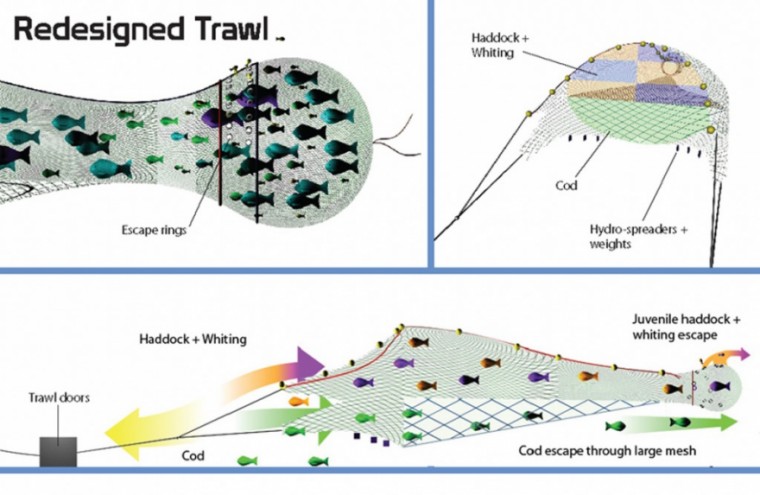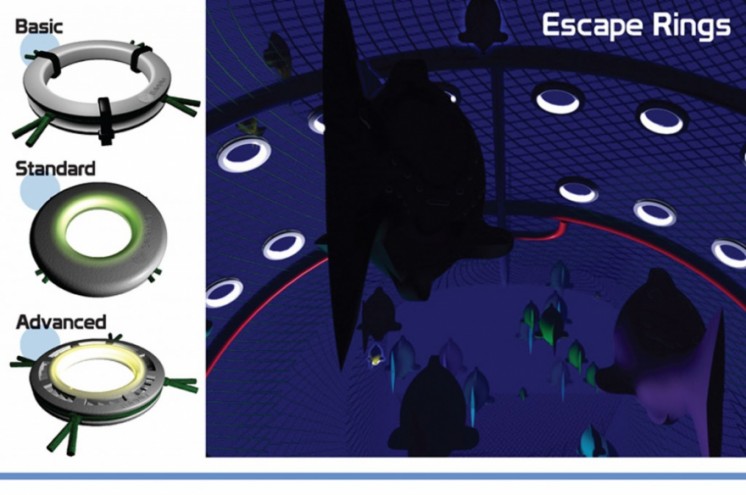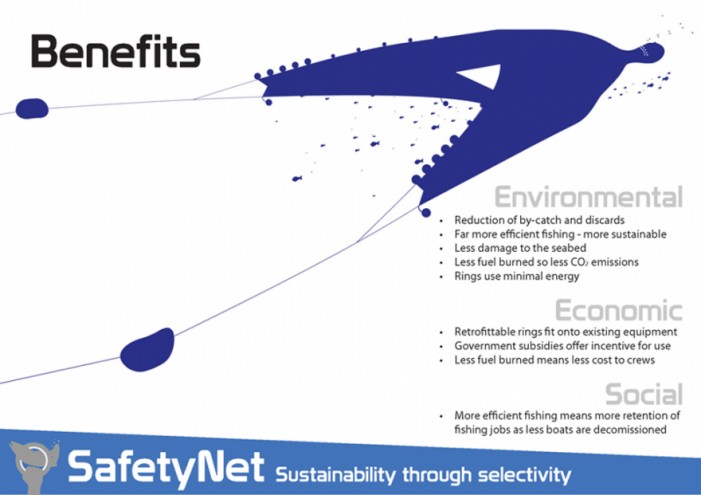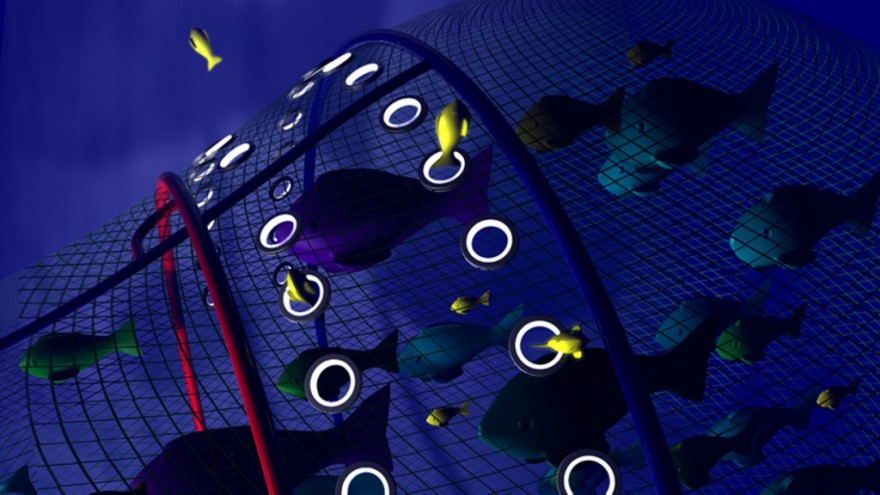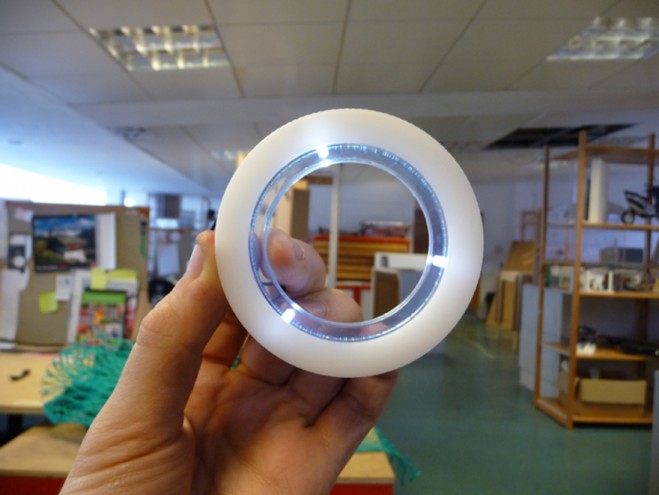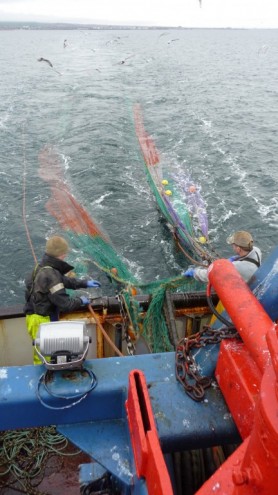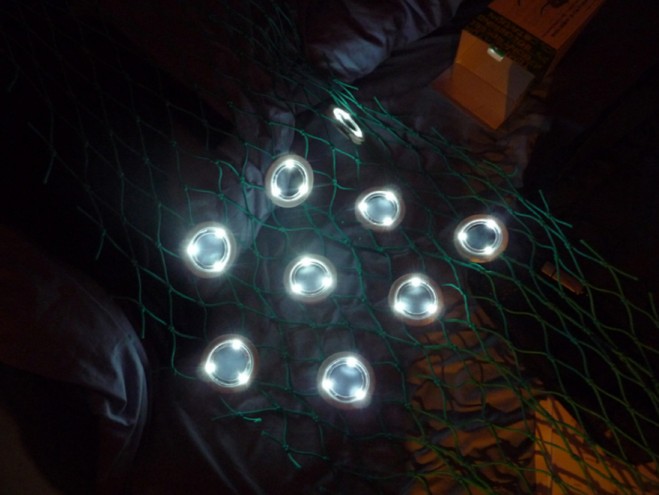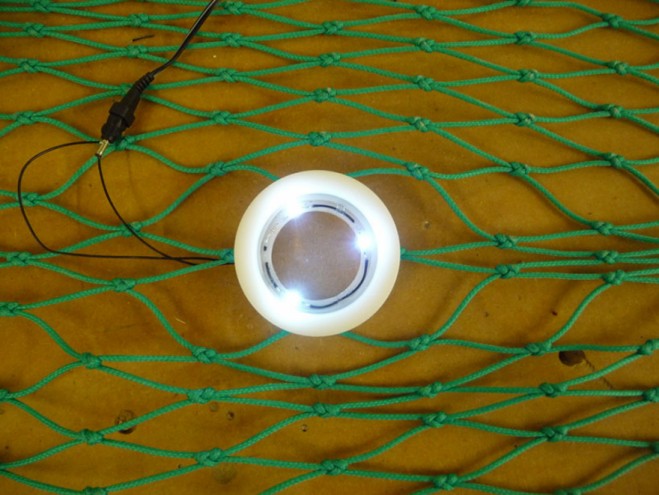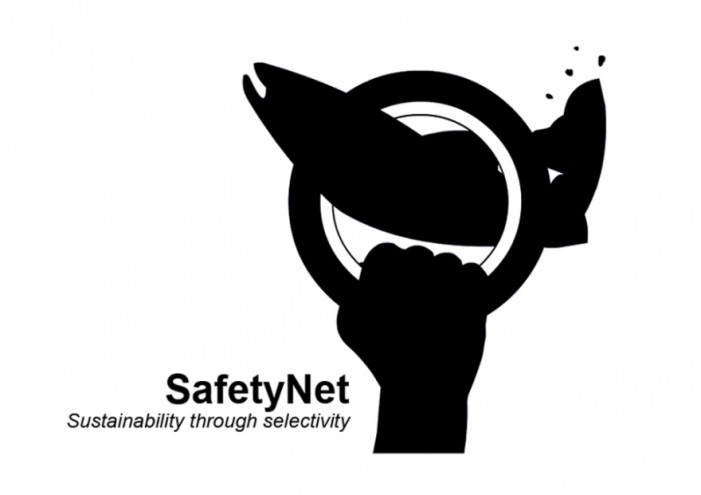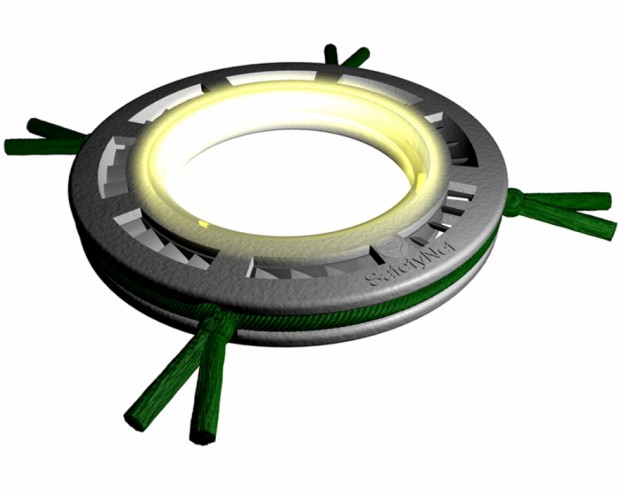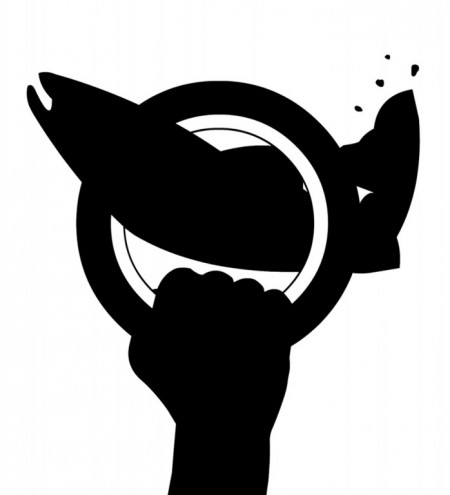For some 40% of the world’s population the ocean is an important source of food. This would have been fine if the “plenty of fish in the sea” adage was literally true.
Despite this reliance on fish for human consumption, it is estimated that about 7 million tons of fish gets wasted because of being too small or not what the fisherman wanted.
A new industrial fishing net with reinforced rings only help solve the problem by allowing the “unwanted” fish to escape from the net.
The SafetyNet is an industrial fish-trawling net designed by Daniel Watson, currently a student in Innovation Design Engineering at the Royal College of Art in London.
The problem that Watson tackled with the SafetyNet is that big industrial trawling nets scoop up a huge number of the “wrong” kind of fish, along with the “right” kind of fish simply because of a design flaw on the part of the nets. The “wrong” kind of fish are unable to escape from the nets because the diamond-shaped holes in the netting are pulled closed as the net is dragged through the water. The "wrong" fish die on their way up to the boat. From here these unwanted, now dead, fish are simply tossed back into the water.
Watson proposes thus that the nets are studded with reinforcing rings, which make the holes unable to shut when it is being pulled through the water. In his research Watson discovered another problem, which he promptly addressed. Apparently most fish can’t see the net they’re caught in so the reinforced rings are fitted with LED lamps. These lamps work like an exit sign for the fish. It’s also great that the LEDs are powered by a built-in turbine system in the rings, which uses the energy from the constant flow of water to keep the batteries charged.
SafetyNet was designed as an entry into Time To Care, a sustainability-in-design competition sponsored by Victorinox Swiss Army.
Watch the video

